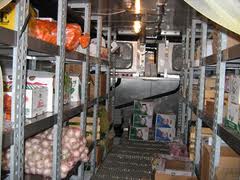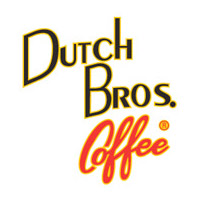Commercial Refrigeration Service And GreenChill Compliance
 GreenChill is a partnership between the Environmental Protection Agency (EPA) and food retailers who use refrigerated equipment to reduce refrigerant emissions and thereby decrease the damage they can cause to the ozone layer. As part of this process, retailers are also encouraged to update their refrigerants during commercial refrigeration service to non-ozone depleting substitutes in their refrigerated equipment.
GreenChill is a partnership between the Environmental Protection Agency (EPA) and food retailers who use refrigerated equipment to reduce refrigerant emissions and thereby decrease the damage they can cause to the ozone layer. As part of this process, retailers are also encouraged to update their refrigerants during commercial refrigeration service to non-ozone depleting substitutes in their refrigerated equipment.
Commercial Refrigeration Service And Refrigerant Conversion
Conversion from older refrigerants in refrigerated equipment like HCFC-22 and other HCFCs is a major part of GreenChill Compliance. HCFC-22 is known to cause significant damage to the ozone layer when it is inadvertently released during commercial refrigeration service. To prevent this in the future the GreenChill Partnership as well as the Montreal Protocol, a treaty signed by the United States, has called for the phase out of HCFC-22 and other damaging HCFCs. This will force the transition to newer, non-ozone depleting refrigerants during commercial refrigeration service.
As of 2015, there will be no import or production of ozone damaging HCFCs except for refrigerated equipment manufactured before 2010. While retailers who own older equipment will still be able to get their refrigerant recharged during commercial refrigeration service, by 2020 two of the most widely used HCFCs (142b and 22) will no longer be imported or produced. By 2030 it is expected that all damaging refrigerants are eliminated in refrigerated equipment in the United States because there will be no import or production of any HCFCs by 2030. At that time, almost all commercial refrigeration service will be done on equipment using non-ozone depleting refrigerants.
Two Main Approaches For Retrofitting Refrigerated Equipment During Commercial Refrigeration Service
 The first approach to retrofitting retail refrigerated equipment during commercial refrigeration service involves replacing the refrigerant only. This approach is more cost effective and results in minimal changes to the refrigerated equipment. The second approach involves installing new mechanical systems during commercial refrigeration service which is obviously more costly. In addition to migrating to a non-ozone depleting refrigerant, the commercial refrigeration service could include installing new compressors, condensers, and cases.
The first approach to retrofitting retail refrigerated equipment during commercial refrigeration service involves replacing the refrigerant only. This approach is more cost effective and results in minimal changes to the refrigerated equipment. The second approach involves installing new mechanical systems during commercial refrigeration service which is obviously more costly. In addition to migrating to a non-ozone depleting refrigerant, the commercial refrigeration service could include installing new compressors, condensers, and cases.
Regardless of which approach is undertaken any retrofit should include improving the leak tightness of the refrigerated equipment during the commercial refrigeration service. Emissions of the refrigerant whether old or new is still a large issue because even if they are non-ozone damaging refrigerants newer refrigerants like HFCs are still considered greenhouse gases. So to prevent exchanging one environmental problem for another refrigerated equipment owners need to use the retrofit conversion process during commercial refrigeration service as a way to reduce refrigerant leaks and prevent refrigerant emissions.

 Refrigeration equipment is a vital part of any food service establishment’s operations, so commercial refrigerator service should not be taken lightly. When looking for a technician to provide your commercial refrigerator service, you’ll want to find one that has certified training in the service of refrigeration equipment. The non-profit organization North American Technician Excellence, or NATE, specializes in certifying technicians in commercial refrigerator service and the field of refrigeration equipment.
Refrigeration equipment is a vital part of any food service establishment’s operations, so commercial refrigerator service should not be taken lightly. When looking for a technician to provide your commercial refrigerator service, you’ll want to find one that has certified training in the service of refrigeration equipment. The non-profit organization North American Technician Excellence, or NATE, specializes in certifying technicians in commercial refrigerator service and the field of refrigeration equipment. refrigerator service technician remain up to date. To accomplish this, NATE requires re-certification testing to keep technicians on the cutting edge of the refrigeration equipment industry.
refrigerator service technician remain up to date. To accomplish this, NATE requires re-certification testing to keep technicians on the cutting edge of the refrigeration equipment industry. As food service equipment goes, the walk in cooler is probably one of the most important pieces of refrigeration equipment a restaurant owner will invest in. As previously discussed, the right walk in cooler can drastically impact a restaurant’s bottom line. If the walk in cooler is too big, then the restaurant is keeping too much air cold. If this vital piece of refrigeration equipment is too small, then profits will be eroded by spoiled perishable items, and the restaurant owner’s food service equipment could be putting them out of business. So the walk in cooler is a very important piece of food service equipment.
As food service equipment goes, the walk in cooler is probably one of the most important pieces of refrigeration equipment a restaurant owner will invest in. As previously discussed, the right walk in cooler can drastically impact a restaurant’s bottom line. If the walk in cooler is too big, then the restaurant is keeping too much air cold. If this vital piece of refrigeration equipment is too small, then profits will be eroded by spoiled perishable items, and the restaurant owner’s food service equipment could be putting them out of business. So the walk in cooler is a very important piece of food service equipment. Keeping the air flowing smoothly and keeping condenser coils cleaned is vital to proper operation of any piece of refrigeration equipment. This means proper ventilation, regularly cleaning filters, and regular check-ups with a certified technician. From time to time the refrigerant will need to be replaced, and per state regulations this can only be done by a refrigeration equipment technician who is certified. When regular maintenance of your walk in cooler is not performed your are increasing the odds of it breaking down prematurely. Almost always, your walk in cooler will break down on the hottest day of the year when your establishment is busy and you need your food service equipment the most. To add insult to injury it will probably happen on a Saturday night when all of the refrigeration equipment technicians are unavailable.
Keeping the air flowing smoothly and keeping condenser coils cleaned is vital to proper operation of any piece of refrigeration equipment. This means proper ventilation, regularly cleaning filters, and regular check-ups with a certified technician. From time to time the refrigerant will need to be replaced, and per state regulations this can only be done by a refrigeration equipment technician who is certified. When regular maintenance of your walk in cooler is not performed your are increasing the odds of it breaking down prematurely. Almost always, your walk in cooler will break down on the hottest day of the year when your establishment is busy and you need your food service equipment the most. To add insult to injury it will probably happen on a Saturday night when all of the refrigeration equipment technicians are unavailable. items that create profit for restaurants the walk in fridge is unbeatable. When this piece of equipment goes down, either due to improper commercial refrigeration service or power outage, the potential for loss to the restaurant is significant. When considering filling your establishment with restaurant equipment the decision an owner makes on the walk in fridge could be the most important one.
items that create profit for restaurants the walk in fridge is unbeatable. When this piece of equipment goes down, either due to improper commercial refrigeration service or power outage, the potential for loss to the restaurant is significant. When considering filling your establishment with restaurant equipment the decision an owner makes on the walk in fridge could be the most important one. The size of your walk in fridge unit is going to be a a very important choice too. Naturally there are a variety of sizes and configurations for a walk in fridge. In fact, there is probably more options for this piece of equipment than any other. Most experts agree that if your cold storage requirements exceed 80 cubic feet, or if you serve more than 250 meals per day, then you are going to need to add a walk in fridge to your list of required equipment. The type of food you serve in your eating establishment will also impact your choice of a walk in fridge.
The size of your walk in fridge unit is going to be a a very important choice too. Naturally there are a variety of sizes and configurations for a walk in fridge. In fact, there is probably more options for this piece of equipment than any other. Most experts agree that if your cold storage requirements exceed 80 cubic feet, or if you serve more than 250 meals per day, then you are going to need to add a walk in fridge to your list of required equipment. The type of food you serve in your eating establishment will also impact your choice of a walk in fridge. Being a restauranteur or retail grocer, you probably understand how important commercial refrigeration is to your business. Commercial refrigeration equipment would include any free standing or built-in unit(s) that provide cold storage for your company’s perishable goods. Commercial refrigeration includes both refrigerators and freezers which are available in a wide variety of configurations including walk-ins, reach-ins, and commercial refrigeration display cases.
Being a restauranteur or retail grocer, you probably understand how important commercial refrigeration is to your business. Commercial refrigeration equipment would include any free standing or built-in unit(s) that provide cold storage for your company’s perishable goods. Commercial refrigeration includes both refrigerators and freezers which are available in a wide variety of configurations including walk-ins, reach-ins, and commercial refrigeration display cases. Properly maintained commercial refrigeration equipment provides peace of mind to restaurant owners and retail grocers. Quite a bit of your working capital is invested in the perishable goods that regular commercial refrigeration service helps keep at the proper temperature. When you rely on emergency commercial refrigeration service, then you are playing a risky game of chance which could cost you thousands.
Properly maintained commercial refrigeration equipment provides peace of mind to restaurant owners and retail grocers. Quite a bit of your working capital is invested in the perishable goods that regular commercial refrigeration service helps keep at the proper temperature. When you rely on emergency commercial refrigeration service, then you are playing a risky game of chance which could cost you thousands.







